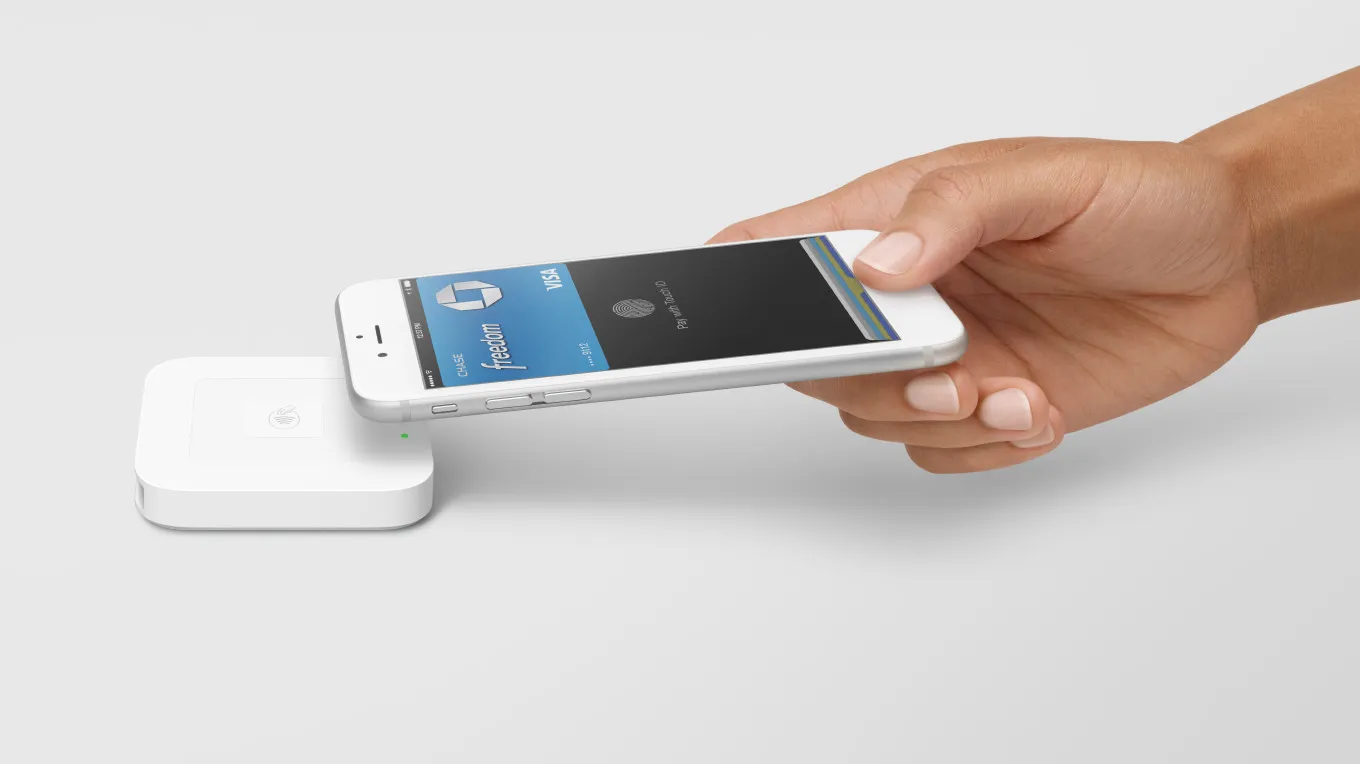Table of contents
Every industry has its own lingo. And to play the game, you’ve gotta learn it. From EMV chip cards to NFC payments, we’ll be the first to admit that payments terminology can be a bit of a snore. But as a small business, it’s pretty important to get educated. This is especially true given the EMV liability shift, which went down last October. After that date (now) you could be on the hook for certain types of fraudulent transactions if you haven’t updated your POS to accept more secure forms of payment.
But what is the difference between an EMV and NFC payment? EMV and NFC are two new, more secure ways to pay. But while they’re often looped together in discussion, they’re completely different things. Here’s a breakdown between EMV vs. NFC payments—and why it makes sense to start accepting both at your business. And if you want an even deeper dive into EMV chip cards and NFC payments check out our comprehensive guides (linked above).
What EMV means
EMV stands for “Europay, MasterCard, and Visa.” (We know, not a particularly informative acronym). Here’s what EMV means in practice: a transaction between a chip-enabled credit card (as opposed to a magnetic-stripe-only card) and an EMV-enabled payment terminal or ATM. And here’s why you need to know about it: EMV will soon become the technological standard for credit card processing in the United States. (It’s already the standard throughout most of the world).
We’re switching over to EMV cards (aka chip cards) because they’re leagues more secure than the magnetic-stripe cards we currently carry. EMV cards contain a tiny, dynamic computer chip that talks back and forth with the payments terminal to make sure you’re not a fraudster. The technology works. In other countries that have adopted EMV as the standard, counterfeit fraud has dramatically declined.
EMV cards are steadily making their way into mainstream rotation. In fact, in December 2015, roughly 53 percent of cards processed on Square Stand were EMV chip cards, up from 12 percent last January. But to process those cards as an EMV transaction, you need an EMV reader. Which is something you’ll want to get soon. Why? For one, EMV transactions are more secure for both you and your customers. And secondly, the liability shift happened on October 1, 2015 — which means you could be on the hook for certain types of fraudulent transactions if you don’t have an EMV reader by then. Read more about the EMV liability shift in our in-depth guide (linked above)
Something else to know is that EMV cards are processed differently than magnetic-stripe cards. While magnetic-stripe cards are swiped, chip cards are dipped into an emv credit card reader or credit card machine. We like to call it the “chip and dip.”
Here’s what an EMV transaction looks like:
What NFC means
NFC stands for “near field communication.” Basically, it’s the technology that allows smartphones and other devices (like a payments reader) to communicate with each other when they’re close together. NFC enables mobile payments, which are transactions that require no physical contact between the payments device and the payments reader.
At the moment, the buzziest example of NFC technology at work is Apple Pay. To trigger an Apple Pay payment, you hold your iPhone 6 or Apple Watch up to an NFC reader. The devices have to be pretty close — a couple inches at the most (that’s where the “near” part of “near field communication” comes in).
The transaction time is really fast — the whole thing takes just seconds. It’s also really secure. Because Apple Pay works through Touch ID (Apple’s fingerprint technology), things are pretty locked down even if your phone is stolen. What’s more, contactless payments like Apple Pay contain multiple layers of dynamic encryption. The data associated with the cards you have on file is constantly changing. So even if fraudsters were somehow able to get in there, the information would be useless to them.
Here’s what a contactless payment looks like:
EMV Credit Cards vs. NFC Credit Cards
EMV credit cards contain a tiny computer chip with more sophisticated security features than magstripe cards (they’re encrypted). EMV credit cards are processed differently than magstripe cards—they’re dipped instead of swiped. NFC cards are equipped with RFID technology that allows customers to “tap to pay.” NFC credit cards do not need to be inserted into payments reader. Customers just hover or tap their card over the payments reader to initiate the transaction.
The long and the short of it on EMV vs. NFC technology? Both are more secure ways to pay and to process payments. The Square contactless and chip reader accepts both. You can order yours here.
Related Articles
- What is EMV? Everything You Need to Know About Chip-enabled Cards
- An Apple Pay Guide: Everything You Need to Know About Contactless Payments
- The Ultimate NFC Guide: Everything You Need to Know About Near Field Communication
- A Guide to the Liability Shift: What Businesses Should Know
![]()














